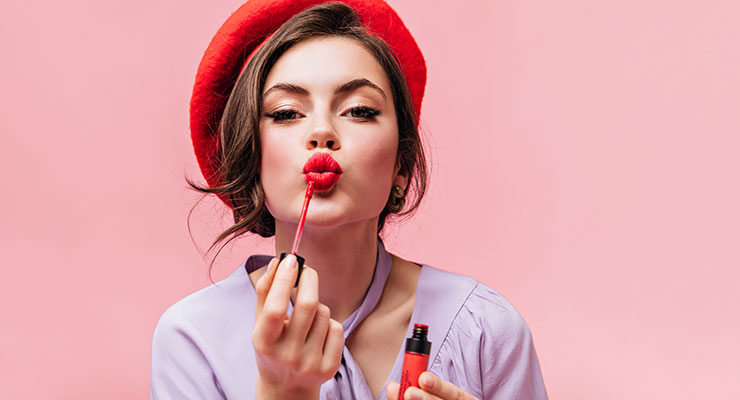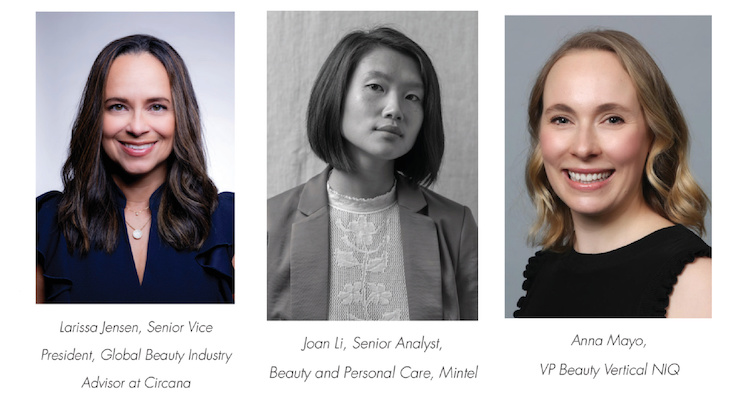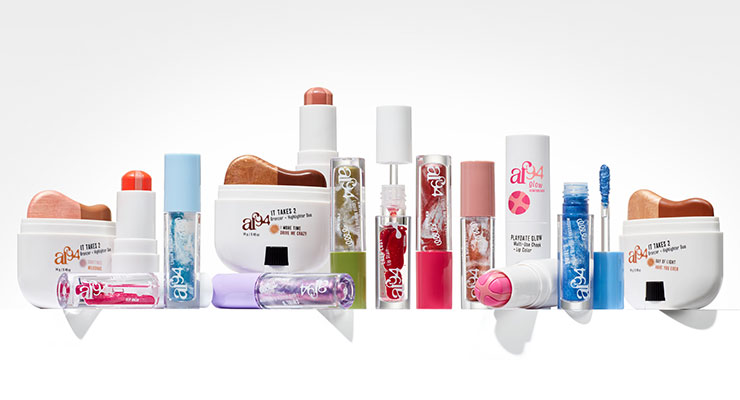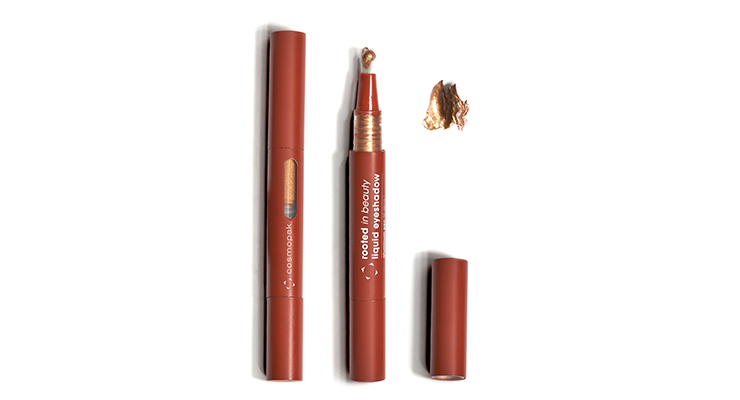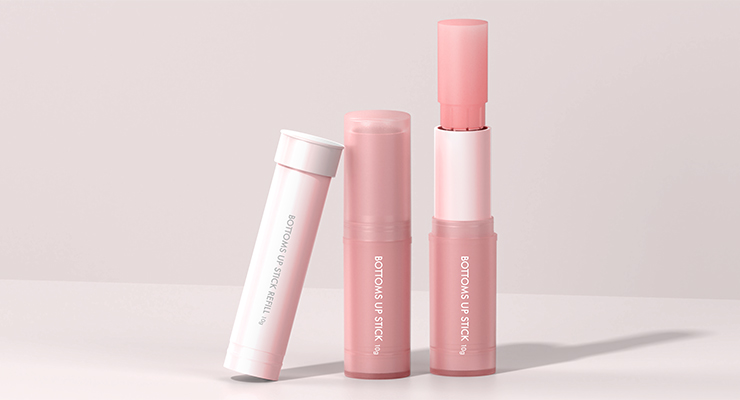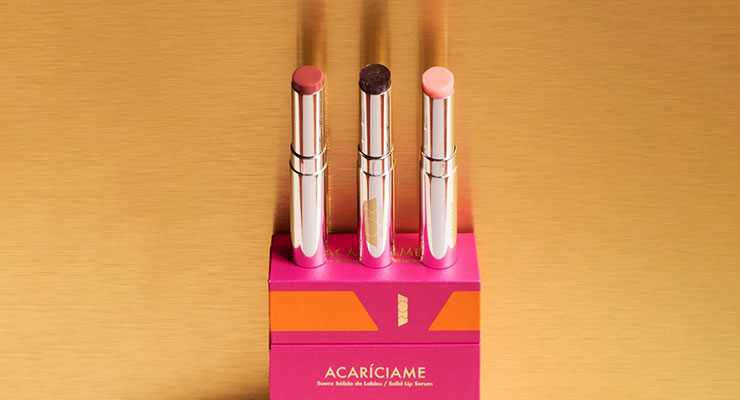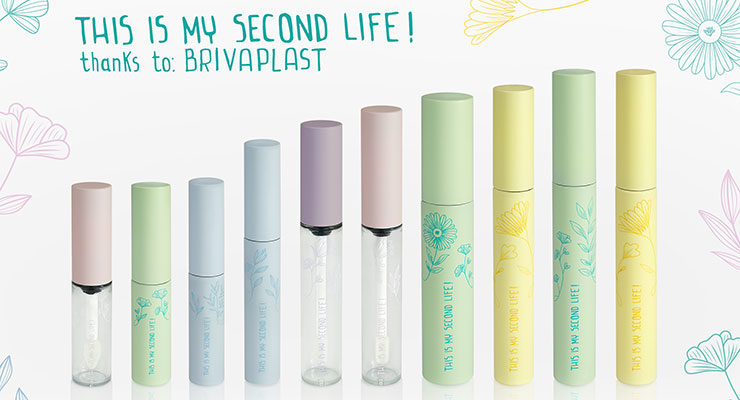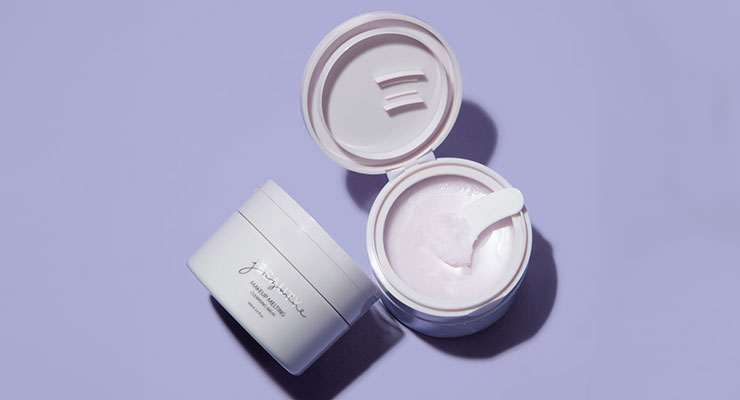Jamie Matusow, Editor-in-Chief02.26.24
The Color Cosmetics market has ridden some ups and downs over the past few years (especially during the pandemic) when social interactions were minimized. What's happening now?
We spoke to industry insiders for the following comprehensive outlook on the cosmetics market.
The Color Cosmetics market is a beauty category that has bounced back from its decline, but consumer preferences have evolved. Above all, many consumers are prioritizing value, whether via double-duty products with skin benefits or those that are dual-purpose for lips and cheeks, clean ingredients, easy applications, and more.
Both prestige and mass market beauty were two of the top five fastest growing areas across all of retail in 2023, according to Circana. Looking at unit sales performance, prestige beauty is the standout, as the only tracked industry to grow in units sold—for two years in a row.
Larissa Jensen, Senior Vice President, Global Beauty Industry Advisor at Circana—and a member of Beauty Packaging’s Board of Advisors—says luxury spending picked up in categories such as makeup, “which coincidently carries the lowest average price in beauty.” Designer makeup brands, says Jensen, which are priced about 75% higher than the rest of the category, have been growing at a faster rate than total makeup.
But once again, she says the consumer shift to value is noticeable. “Products driving growth in the luxury makeup sector include lip oils, lip glosses, and blushes. With makeup having the lowest average price in the prestige market, it’s not surprising that most of the product drivers in luxury fall into the less expensive yet fun segments like lip products,” explains Jensen.
In a late-2023 study on Color Cosmetics by Mintel, Joan Li, Senior Analyst, Beauty and Personal Care, found that overall color cosmetics usage had declined. Still, she says, “The market is predicted to proceed with resilience as brands deliver against interest in facial skincare claims, convenience and multi-functionality.”
Li also says value is a key factor. “In a cost-conscious environment, value is the name of the game, and there are many ways to play. In a competitive landscape, brands shouldn’t forget that emotive benefits, too, can drive value, and strengthened ties to well-being themes will bolster the category as a whole.”
The Dupe Effect
While some makeup aficionados may be influenced by the lower cost of dupes promoted on social media, Mintel reports that many beauty users prefer premium products. They may purchase fewer, but those they perceive as higher-quality items.Anna Mayo, VP Beauty Vertical NIQ—and a frequent columnist for Beauty Packaging—explains, “Dupes offer affordable alternatives that keep consumers in the category despite rising prices.” She says Beauty is non-negotiable for many consumers, with 77% of skincare purchasers, 61% of fragrance purchasers, and 60% of cosmetics purchasers saying they will never stop buying from the category. With this, 46% of consumers state they will purchase less expensive products as a strategy to spend less on beauty.”
The good news: Mayo says both “duper” brands and “duped” brands are seeing dollar and buyer growth.
Emotive Purchasing
What was once coined as “The Lipstick Effect” by Leonard Lauder, in which, even in tough economic times, consumers purchased a feel-good lipstick, the trend has continued to prevail.Not only are lipstick sales skyrocketing, but social media influencers and celebrities are playing an accelerated role in steering trends. For instance, Misumi Skincare revealed that online interest for red lipstick increased almost five times the average volume after Taylor Swift was spotted with her signature red lips while out celebrating her birthday in Manhattan.
Brown lipstick, too, has been a social trend of late. Rare Beauty by Selena Gomez ‘Kind Words Matte Lipstick’ in a shade called “Wise” provides “a velvety, but matte finish.” Glossier, NARS and Anastasia are just a few other brands that have also launched brown lipsticks.
Lips are a growing focus, color or not. At this year’s Golden Globes, one of the beauty trends called out was Nude Lips, as seen on Selena Gomez and Billie Eilish.
Lip powder, too, has seen a spike in consumer interest, according to Persistence Market Research, which says they anticipate “a remarkable expansion,” expected to surpass a value of $608.7 million in 2023, to $933.5 million by 2030. Rising demand is attributed to factors such as natural and organic cosmetic products, an increasing awareness of cruelty-free beauty products, and the growing popularity of matte lip colors, which can be easily achieved with powders.
Lip powders are housed in various formats, including pens and compacts, offering convenience and experimental mixing. The fastest growing lip powder product segment, according to Persistence, is the pen.
In the hair color category, Fresha, based on Google search data, reported that Kylie Jenner recently sparked searches for ‘pink hair dye’ to soar 1,443% after her TikTok and Instagram post featured her new hairstyle. Fresha said the TikTok video surpassed 3.4 million likes and over 12.7 million views in just 15 hours.
Vegan Beauty Set for Growth
Demand for vegan beauty has also soared, especially due to social media users and influencers who sing the praises of the benefits of a healthy lifestyle, which many espouse to be clean, sustainable, cruelty-free and simplified.Persistence Market Research, found that the global vegan cosmetics market is forecasted to expand at a CAGR of 6.3%, increasing from a value of $16.9 billion in 2023 to $25.9 billion by the end of 2030.
Related: Ranking the Top Vegan Beauty Brands on Social Media
Cosmetic Packaging Suppliers Step In
Of course, cosmetic packaging and full-service suppliers are meeting these fast-paced trends with a wide variety of products that are not only attractive and luxurious, but are often made of sustainable materials, and increasingly, refillable. Some premium brands are launching super high-end cosmetics with fewer ingredients or exotic plant-based ingredients, and in packaging that feels more like “a luxe accessory” via formulation, design and texture.Appealing to the “small luxury” consumer, the ultra-prestige Hermes brand launched gold and white refillable eyeshadow palettes late last year, following the success of their lip products.
The Hermes cosmetic range now includes a mascara with a brushed metal cap, as well as several eye liners. Chanel premiered 31 LE ROUGE, a luxury glass lipstick with a striking square case that’s refillable.
A new lipstick launch from Dior is housed in a refillable, beautifully decorated ceramic case.
Accessible Beauty
On the other hand, there are many prestige and mass color cosmetics brands making connections with the perhaps more cost-conscious Gen-Z and Gen-Alpha audience, as well as consumers of all ages.For instance, af94, created by the founders of “about-face” announced a new retail partnership with Ulta Beauty (following one with Walmart), in which they say they “are making self-expression more accessible, by inviting beauty enthusiasts of all ages to discover af94’s teen-approved multi-functional products, innovative formulas and bold infusions of color, along with creative categories dropping throughout 2024, all at an accessible price point of $10 or less.”
af94’s Jeanne Chavez, Co-Founder and Chief Innovation Officer, says, “We are thrilled to partner with Ulta Beauty to further engage ‘screenagers’ and emerging beauty consumers with our fun, innovative makeup solutions, just as they are experimenting and developing a love for beauty.”
Chavez says that af94 combines product innovation with accessibility, not just through price points but via easy-to-use product applications and a wide range of categories and shade assortments. “The brand values align with a focus on clean and conscious products that are both vegan and cruelty-free, without ever compromising quality,” she adds.
Cosmetic Industry Suppliers Discuss Trends
As always, to bring you a full perspective on all sides of this category, Beauty Packaging reached out to a number of cosmetic industry suppliers to ask about market trends, the future of the category—and more.We asked cosmetic packaging suppliers about:
- Which types of packaging are being requested most often?
- How important has sustainability become?
- What changes lie ahead?
The Latest Trends
Overall, packaging is known as the means to attract consumer interest from the very start. Sustainable materials now add to the equation and are often touted directly on the bottle, carton or tube. All of these components add up to value in the consumer’s eye.“Packaging is not only a means to use a product, but a platform to communicate the brand’s values,” according to Brivaplast. “It should promote real inclusivity and increasingly more personalized options to promote everyone’s individual identity at every age. The packaging has to be pleasant to use and aesthetically interesting as far as colors and texture, keeping value and a quality aspect in mind.”
In addition, Brivaplast says the packaging has to be easy to use. Going forward, they say AI technology could help them in creating personalized proposals both for brands and end users.
GPI Beauty also sees the influence of AI technology, and mood-boosting features, on color cosmetics packaging. But everything from monochromatics to whimsical touches also play roles in delivering a message and captivating consumers.
“Within color cosmetics, the prevailing AI-driven futuristic styles originating from the Metaverse trend remain dominant,” says Maria Marshall, General Manager, GPI Beauty. Concurrently, she says,
“The enduring allure of monochromatic aesthetics simplifying beauty regimens is on the rise. Alongside this, there’s a notable shift toward lively, whimsical palettes empowering makeup enthusiasts to curate customized, mood-inspired appearances.”
At Cosmopak, packaging trends include an increase in popularity of sustainable and eco-forward practices, such as alternate materials in familiar forms. Dan Wolfe, SVP Business Development, tells Beauty Packaging that bio-resins, glass and PCR provide a wide range of options, “and we see brands in color using these materials to meet their sustainability goals.” Wolfe adds that improving production technologies around glass and aluminum vials have allowed for brands to offer a commercially viable product with alternate materials, while offering a familiar and luxurious consumer experience.
One of Cosmopak’s recent innovations is their turnkey patented airtight aluminum twist eyeshadow pen. Wolfe says, “The patented airtight chamber protects and prolongs active formulas while the pen reduces plastic use, and delivers precise applications consumers will love.” It was selected as a finalist for the IT Awards in MakeUp in LosAngeles in February.
Influencers, Indie, and celebrity brand launches sometimes have their own criteria as far as packaging for color cosmetics.
Vonda Simon, Founder & CEO of Seacliff Beauty, says, “For influencer and Indie brands, we’re still seeing a theme of repeated products in excess such as a variety of palettes with countless eyeshadow shades, trying to have a SKU for every type of product (lip, skin prep, brushes, etc.). However, with celebrity brands and more niche brands alike, we’re seeing a reduction in product assortment and a more simplified collection based on product routines while still offering inclusive shade ranges.”
Packaging shapes have always been a way to stand out both online and in store.
Kristen Nicholson, Director of Product Sales, HCT by kdc/one, agrees. “We are seeing more unique shapes specifically for lip gloss caps, and lipsticks. The rounded and soft caps have been a more popular, fun, and playful design aesthetic.”
Additionally, Nicholson says sticks are on the rise as well as cleaner, simplistic packs and deco, a resurgence of a back-to-basics trend. She tells Beauty Packaging they are also seeing more requests for recyclable, mono-material designs for sustainability.
Sustainable packaging trends are also top of mind at APC Packaging, where Rick Ponte, Vice President of Project Engineering, says, “There is a discernible shift away from traditional materials such as ABS and SAN, as the industry increasingly recognizes the imperative to adopt eco-friendly alternatives.”
Ponte explains, “This evolution not only aligns with the growing consumer demand for environmentally conscious practices. but also reflects a proactive commitment to reducing the ecological footprint associated with cosmetic packaging. The burgeoning focus on sustainable solutions in packaging underscores the industry’s dedication to harmonizing aesthetic appeal with a heightened sense of responsibility toward the planet.”
Jackie Paterno, Vice President at CTK, agrees, saying, “There’s a growing emphasis on sustainable packaging materials—PCR resins, biodegradable materials, and refillable options. Brands are increasingly adopting eco-friendly packaging to reduce their environmental impact.
CTK’s Bottom Up Stick won the Sustainable Package Award at the Cosmopack Exhibition in Hong Kong. Paterno says this “super-sustainable” packaging is crafted entirely from PP material and is refillable. In addition, the unique push-up design ensures zero product waste, allowing for the complete use of all products from start to finish. Several sizes are available: 10-, 7-, or 4g for different kinds of formulas such as lipstick or concealer.
Paterno says interest in multi-use or multifunctional products has also increased: “Packaging that serves multiple purposes or offers versatility in application is becoming more popular.”
A Rising Demand for Color Cosmetic Packaging
As Color Cosmetics span everything from lip to eye, cheek to foundation, hair streaking and more, we asked packaging suppliers in which area they are experiencing the most growth category-wise at the moment.
Seacliff Beauty’s Simon says she sees interest throughout the color cosmetics category, with a rise in skin, eyes, and lips.“We saw a lot of growth for eye products during the pandemic, and that hasn’t dropped off as many expected it would,” Simon explains. With skincare, she says, consumers are shopping for the “clean girl” aesthetic that has further blurred the lines between cosmetics and skincare. Consumers want products that perform well without the look of wearing “makeup” in addition to ingredients that benefit the skin.
“We see that the beauty products we use are mirroring the treatments that are also trending on social media for our brows, lips, and eyes (lamination, fillers, lash extensions, etc.). The shift in the beauty industry is leading us to find the perfect balance between full glam and natural makeup, such as the ‘clean girl’ aesthetic trend,” adds Simon.
The Brivaplast team also sees interest across the color categories, saying, “Caring products for face, lips, eyes are growing. Products that promote health of the skin at every age. The products should underline the beauty of every age group, both externally and internally, to express an in-and-out beauty. The beauty routine should focus on a few really good products.”
APC Packaging’s Ponte hones in on one category, saying foundation is currently experiencing significant growth in demand, particularly with a focus on unique pump options. In anticipation of this trend, Ponte says they expanded their pump and dispensing capacity. By early 2024, he says, “Our factory will double in size, allowing us to produce 800 million pumps per year. This positions us at the forefront of innovation and underscores our commitment to meeting the evolving needs of consumers in the cosmetic industry.”
Ponte also says many brands are looking for smaller dosing pumps which APC has addressed by adding 0.12, 0.16 and 0.23 dose options.
Cosmopak’s Wolfe, sees the most activity in lip balms and treatments, saying, “They offer consumers an easy-to-use experience in the post-Covid world.”
Lip and eye are currently seeing a lot of activity at GPI Beauty, due to a variety of industry factors. Marshall cites these as:
Innovation in Formulas and Finishes: Cosmetic companies continuously innovate, introducing new formulas, finishes, and textures for lip and eye products. Matte, glossy, metallic, long-wearing, or hydrating options cater to diverse preferences, driving the expansion of these categories.Trends and Influencer Culture: Social media and influencer culture heavily influence makeup trends, particularly in lip and eye makeup. Viral trends and influencers showcasing various looks and techniques encourage consumers to experiment with different eyeshadows, liners, mascaras, lipsticks, and lip glosses.
Personal Expression: Lip and eye makeup allow for self-expression. Consumers use these products as tools to express their creativity, moods, and individual styles. This has led to a surge in demand for a wide range of shades, from bold and vibrant to natural and subtle, appealing to a broad customer base.
Lip products have also prompted a lot of requests at HCT by kdc/one, where Nicholson says, “We have produced a lot of lip glosses recently. Lip glosses, nourishing lip masks, treatments, and lip oils have all been popular lately.”
HCT by kdc/one produced the newly launched AORA México’s Acaríciame Solid Lip Serum. It is a mono-material aluminum lipstick that is fully recyclable. The formula has a soft, shiny gloss-like finish that is encapsulated in a lipstick. Nicholson says, “The silky texture melts upon first contact and feels like a second skin. It’s a clean formula with 30% skincare ingredients with a touch of color.”CTK’s Paterno has also seen a strong growth in lip products, resulting in a high demand for lip packaging. She says there is a particular emphasis on the refillable feature.
Most Popular Packaging Features
As consumer preferences and regulatory mandates tip further toward sustainable packaging, brands and suppliers are pushing forward with innovative and workable solutions. In this somewhat new frontier, sustainable packaging has become of utmost interest, if not a necessity, and suppliers are often tasked with the role of educating clients about the various sustainable options and materials that meet necessary criteria.A familiar user experience with sustainable aspects is highly requested right now, says Cosmopak’s Wolfe. “Brands and consumers have used color cosmetics in familiar ways for many years and re-educating consumers is a long-term process. Brands are uncompromising on highly functional packaging. Cosmopak has created many ways to incorporate sustainable stories into classic package uses across many product categories—including tubes, jars, vials, pumps, dispensers, bottles, and paper packaging.”
In addition to rising interest from consumers, many retailers have requests of their own, and make some selections based on brands’ sustainable packaging stories.
Seacliff’s Simon verifies the trend, saying, “Brands are requesting sustainable solutions for new and existing packaging due to requirements and goals for retailers in the beauty industry. Additionally, consumers and the new generation of beauty enthusiasts are looking to brands who are ethically and environmentally more responsible.”
At GPI Beauty, Marshall says beauty consumers continue to demand sustainable innovative packaging solutions and brands are responding. She says, “Mono-material seems to be the most common and difficult to find across all categories. Another solution brands are looking for is refillable packaging made simple.”
Refillable and reusable packaging are also strong requests at HCT by kdc/one, including sticks for hair, face and eye products.
CTK’s Paterno also sees the emphasis on sustainable packaging, saying, “As brands aim to promote sustainability, packaging made from eco-friendly materials; PCR (Post-Consumer Recycled) resin has been requested the most. Refillable products are also widely requested, considering both cost savings and responsible purchasing.”
Sustainable packaging for color cosmetics (and other categories) has many requirements and can be a difficult goal to achieve. Brivaplast’s marketing team concurs that both brands and consumers are looking for more sustainable products that do not harm the environment, but also have a reasonable price and high quality. A high percentage of recycled material in the packaging is always a plus as a “second life” of materials that were previously discarded.
Brivaplast says their ‘This Is My Second Life’ line is a solution to sustainability issues. The team says, “We selected post-consumer plastics that allow a minimized use of virgin raw materials for the caps and bottles, while still ensuring the end product is of the highest quality.” It is available for their mascara, concealer, glosses, eyebrow and eyeliner products. The recycled material for their mascara and eyebrow brushes is obtained by the recycling of water bottles. Products offer high performance in separating and combing the lashes. “The line is finished with a colorful finish, which utilizes mainly renewable raw materials of waste plant origin.”
Additionally, the Brivaplast team says, “The final look of the package should always be visually attractive, regarding shape, colors, texture of the finish and decoration. The feeling of using it has to be pleasant, thus new surface textures are always searched. The application has to bring something new, a sensation on the skin and always easy-to-use.”
Sustainability’s Impact on Color Cosmetics Packaging
All categories of beauty packaging have been greatly affected by the growing need for more sustainable choices. We asked suppliers what trends they have noticed in their quests to move ahead in this arena—and how it has impacted packaging for color cosmetics, in particular.APC’s Ponte feels the industry is in the midst of responding to the wake-up call. He says, “While sustainability hasn’t fully impacted color cosmetic packaging yet, it’s nudging the industry to take a hard look at itself. This growing awareness is pushing for changes, signaling a shift toward more eco-friendly practices in the future.”
Sustainable packaging is having a strong impact, says Seacliff’s Simon, and “is no longer a ‘nice to have’ in the beauty industry.” Consumers are demanding sustainable options, corporations like Sephora and Ulta are making it a requirement and governments globally are increasing regulations. “This is true of all packaging including color cosmetics and has forced us to look at designs that are made from recyclable materials like PE, PP and PET versus some of the more traditional acrylic materials. We are also designing refillable solutions for compacts, mascaras, and lipsticks.”
Seacliff Beauty recently produced Jazmine Beauty’s new Makeup Melting Cleansing Balm jar. This package is made with 50% post-consumer resin (PCR) and includes a spatula stored inside the cap for easy and mess-free product application.
Brivaplast has also made numerous advances in sustainable packaging, saying: “Thanks to research of the packaging, despite being recycled, high grades of quality, both aesthetically and technically, have been reached. For example, recycled PET retains a high level of clarity. Even more colors are usable for the bio-based finishes. For brushes, the fiber types are beginning to perform as well as the traditional virgin material versions. We expect sustainable packages to become the “new normal.”
Cosmopak’s Wolfe notes that sustainability regulation has driven some required changes to packaging especially for brands distributed globally. Consumer behavior has also led to increased demand for incorporating sustainability into color cosmetic packaging.
He explains, “Brands take many different approaches to meet these regulatory and consumer demands, and Cosmopak offers robust solutions for this across all product categories. Brands can choose from a spectrum of sustainability offerings, from highly innovative bio-resins and functions to PCR blends to alternate forms such as glass and paper.”
Sustainability has prompted a transformation in color cosmetic packaging, pushing for innovation and a shift toward more environmentally friendly materials and practices, according to GPI Beauty’s Marshall. “This movement is driven by consumer awareness, industry initiatives, and a collective effort to reduce the environmental impact of cosmetic packaging.”
In general, CTK’s Paterno says, “Color cosmetics packaging is rather complex in terms of conception and structure because it involves the use and combination of various materials. Promoting sustainability often involves simpler structures and sometimes requires the use of a single material, such as aluminum, for certain types of packaging, which can pose challenges for some packaging designs.”
Ultimately there are many challenges for a widespread move to sustainable packaging in color cosmetics—and in the beauty and other CPG industries.
HCT by kdc/one’s Nicholson, sums it up, saying, “It is still a challenge for brands to move toward more sustainable packaging, but we are seeing an increased effort to use less plastic, include PCR material, as well as utilize refillable and reusable designs.”
All options are carefully examined. “Some brands are looking to produce packs composed of sustainable or recycled material, even if this wasn’t part of their core heritage,” explains Nicholson. “Other brands are requiring products to be fully recyclable, and that can be an issue depending on the formula, where options are limited due to compatibility.”
Sales Outlook: What Can We Expect for Color Cosmetics in 2024?
As we’re a couple of months into the year already, we asked some of the leading suppliers and experts interviewed in this article: What do you think 2024 holds as far as Color Cosmetic sales?Cosmopak’s Wolfe says, “For 2024, we foresee a continued crossover of skincare and color cosmetics. Products that will succeed will pair formulas that are easy to wear and healthy for the skin with highly functional packaging that incorporates an eco-forward story.”
Marshall, of GPI Beauty, anticipates, “Based on the industry trends and growth trajectories, GPI is building upon the following: Continued growth of online sales (including e-commerce platforms and social media playing significant roles); virtual try-on tools, AR experiences, and personalized online consultations.” Also: Sustainability as a key driver; an expansion of inclusivity; and multifunctional products blurring the lines between skincare and cosmetics.
In this same vein, Nicholson of HCT by kdc/one, says, “Looking ahead, we are anticipating more minimalistic makeup trends—the “less is more” and “no makeup, makeup” looks. Consumers are looking for multi-use products and ingredients that are “good for you,” along with the sustainable packaging.
Mintel’s Lin notes that by the end of 2023, total retail sales of the color cosmetics market was projected to increase by 10.1% from 2022 and exceed $13.6 billion. She says, “While by conventional wisdom, high inflationary times pose a threat to discretionary spend, color cosmetics has historically been perceived as an affordable luxury. The market’s tie to emotional rather than functional necessity is projected to protect—and even strengthen it—during times of low consumer confidence.
Looking ahead, Mintel says the market is expected to level off in growth as it faces headwinds from trade-down behaviors, the mainstay of WFH and hybrid lifestyles, and competing growth in beauty-adjacent categories (eg, ingestibles, skincare).
“The emotive benefits of color cosmetics will be the market’s greatest tailwind,” says Mintel. The color cosmetic market is estimated to reach $14.9 billion in retail sales by 2028.
Read Next: Our Latest Features
Next-Level Packaging for ‘Swipe ‘n Go’ Beauty Sticks‘Limitless’ Labels for Deco & Customization

